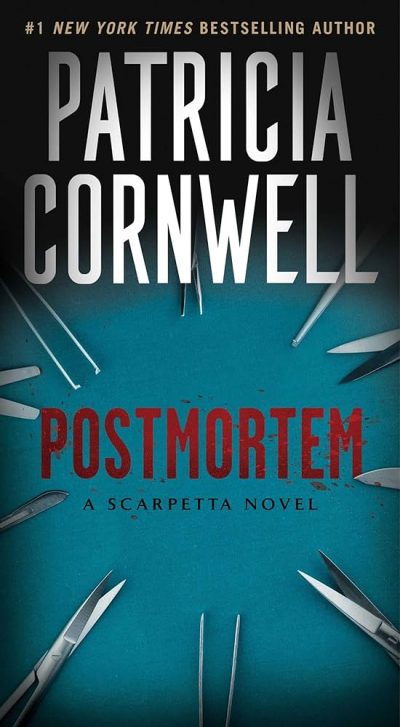Trigger Warnings: Sexual Violence, Violence Against Women
Plot Summary:
Post-Mortem is the first novel in Patricia Cornwell’s twenty-eight-book series. Protagonist Dr. Kay Scarpetta, the chief medical examiner in Richmond, Virginia, has seen an influx of clients with a serial killer on the loose and an incompetent police department. The only link between the murdered women is their manner of death. Scarpetta takes it upon herself to find the missing link and stop the killings. If the case wasn’t difficult enough, somebody is out to sabotage Dr. Scarpetta, but she can’t stop until she knows the truth. After all, the murdered women were just like her – something that haunts her more than the ice-cold bodies in the morgue.
What I Thought:
Post-Mortem was a book I could not put down. As a mystery junkie myself, I was completely absorbed by the progression of the story. The novel’s plot drew me in because I had never read–or heard of for that matter– medical crime fiction with a medical examiner playing detective. Don’t let the categorization of this novel as medical fiction turn you away from it! I am, in no uncertain terms, the farthest one can get from STEM, yet I still enjoyed it. The novel has a unique concentration on the forensic side of a criminal investigation, but it isn’t academically challenging. Rather, the book is more like an episode of NCIS or Criminal Minds. Cornwell doesn’t shy away from the nitty-gritty details of a heinous crime. In fact, she digs into the gruesome details just enough that it scratches that itch for grit without venturing into gore.
I think what drew me to this book was the book jacket blurb – I know, the marketing team got me – but I am so glad it did. The murder mystery has been done and redone, but Cornwell breathes new life into the genre with a dynamic and thought-provoking plot. Not only does the killer possess a rare DNA mutation, but also someone is trying to kill Dr. Scarpetta. Initially, the novel centers on the murder investigations of the brutalized women, but it shifts when Kay realizes that her work has endangered her. The plot shift takes the traditional model for a murder mystery and reinvents it. I was not left disappointed by the conclusion, so if you are like me and don’t like to be left wanting more, fear not! Although the plot is well-developed and captivating, part of what makes it so entrancing is the characterization.
The characters in the novel feel real – even the infuriatingly incompetent ones. Cornwell develops all the characters with depth and realism. I found a personal connection to Kay because she is a loner, “a woman in a man’s world,” but she refuses to shy away from a task because she is told to leave it alone. When she’s told, “No,” she digs her heels in even harder. There are instances of misogyny in the novel, but the female characters in Post-Mortem are strong-willed women who represent the modern woman, even thirty-four years after its publication. I found that Kay and Abby Turnbull’s resilience, especially, restored power to women after the violent crimes against the female victims in the novel.
In conclusion, Post-Mortem is not for the faint of heart; however, that should not discourage a prospective reader. Cornwell is sensitive in her use of description and omits overtly graphic and disturbing details. If you can relish a true-to-form grit lit, this is the next novel to add to your reading list.
Rating: 4 of 5 stars

